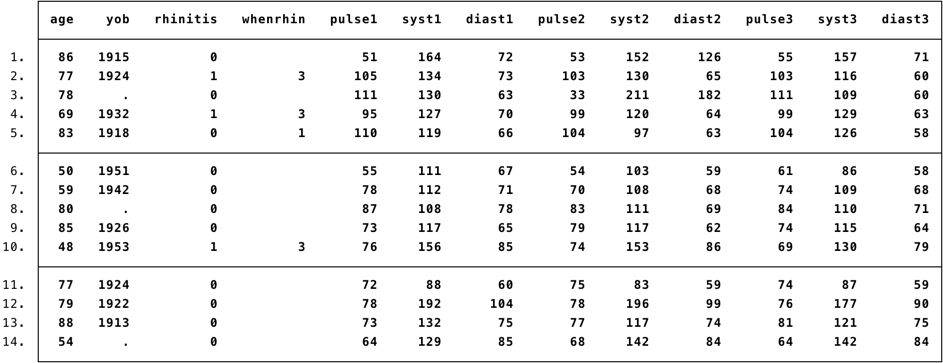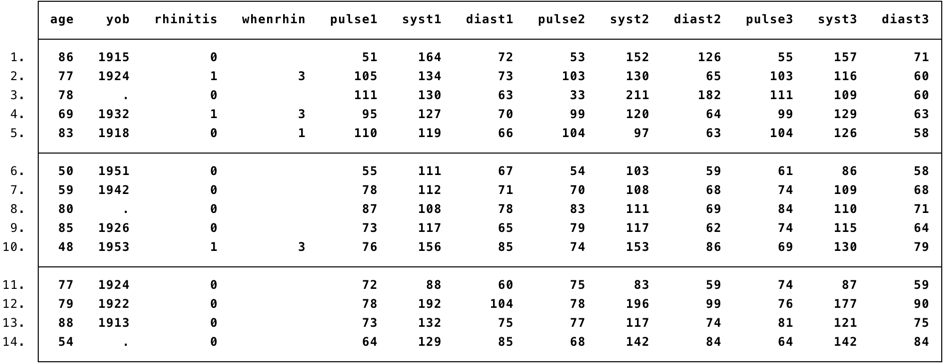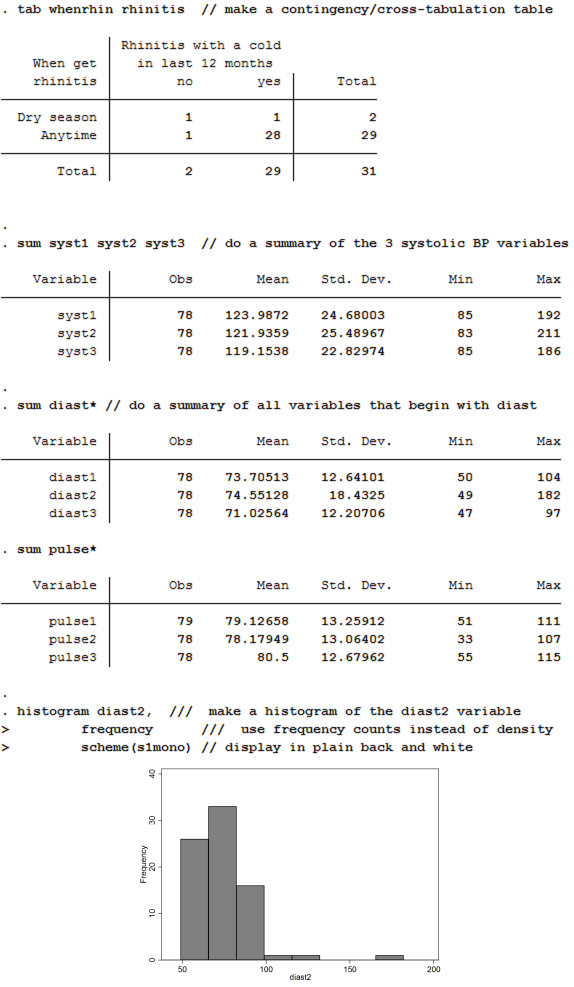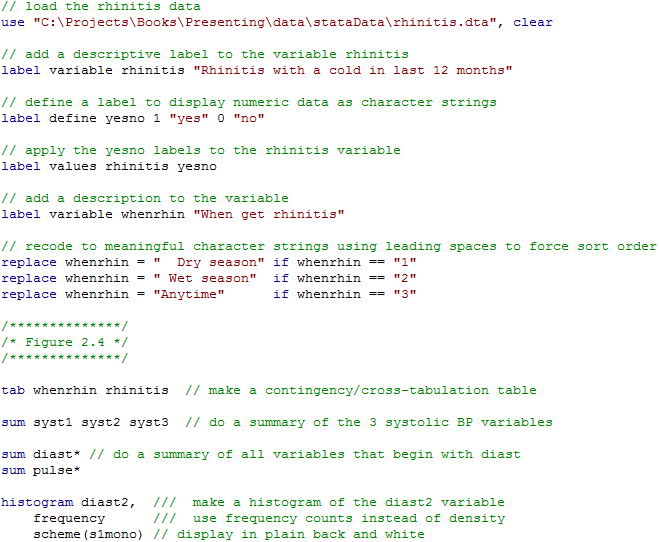Home > Output
Chapter 2: Introducton to the research process using STATA
Figure 2.1 and Figure 2.3

Figure 2.1 Portion of a dataset showing data collected for particiapnts in a screening survey (example)

Figure 2.3 Checking for errors in the data (example)
Figure 2.1 and Figure 2.3 Code

Click here to show code as text
// load the rhinitis data
use "C:\Projects\Books\Presenting\data\stataData\rhinitis.dta", clear
/*****************************/
/* Figure 2.1 and Figure 2.3 */
/*****************************/
// display the first 14 records
list in 1/14
Figure 2.4

Figure 2.4 Code

Click here to show code as text
// load the rhinitis data
use "C:\Projects\Books\Presenting\data\stataData\rhinitis.dta", clear
// add a descriptive label to the variable rhinitis
label variable rhinitis "Rhinitis with a cold in last 12 months"
// define a label to display numeric data as character strings
label define yesno 1 "yes" 0 "no"
// apply the yesno labels to the rhinitis variable
label values rhinitis yesno
// add a description to the variable
label variable whenrhin "When get rhinitis"
// recode to meaningful character strings using leading spaces to force sort order
replace whenrhin = " Dry season" if whenrhin == "1"
replace whenrhin = " Wet season" if whenrhin == "2"
replace whenrhin = "Anytime" if whenrhin == "3"
/**************/
/* Figure 2.4 */
/**************/
tab whenrhin rhinitis // make a contingency/cross-tabulation table
sum syst1 syst2 syst3 // do a summary of the 3 systolic BP variables
sum diast* // do a summary of all variables that begin with diast
sum pulse*
histogram diast2, /// make a histogram of the diast2 variable
frequency /// use frequency counts instead of density
scheme(s1mono) // display in plain back and white




